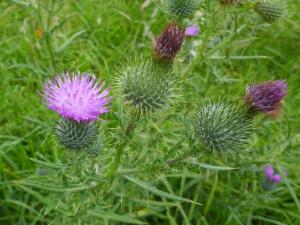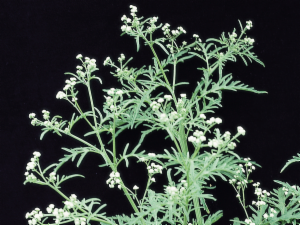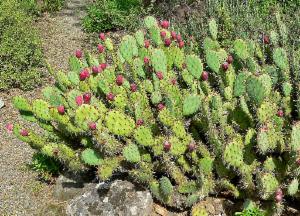Search for Hyporhamphus australis returned 4,679 results.
Refine results
Refine results
Section
- Species (3,422)
- Site Page (621)
- Data resource (322)
- Biodiversity Science project (159)
- Institution (50)
- Support article (39)
- Common Name (21)
- Data provider (21)
- Species list (12)
- Spatial layer (8)
- Collection (4)
Taxonomic rank
- Species (1,855)
- Unranked (1,131)
- Variety (271)
- Subspecies (146)
- Form (12)
- Genus (3)
- Subvariety (2)
- Infraspecific Name (1)
- Species Group (1)
Image available
- Yes (537)
Lifeforms
- Insects and Spiders (543)
- Crustaceans (106)
- Fungi (84)
- Molluscs (81)
- Fish (61)
- Birds (23)
- Mammals (13)
- Reptiles (12)
- Amphibians (2)
Taxonomic status
- Accepted (1,490)
- Synonym (1,270)
- Heteroptypic Synonym (281)
- Homotypic Synonym (212)
- Misapplied (55)
- Miscellaneous Literature (38)
- unreviewed (32)
- Pro-parte Synonym (15)
- Excluded (12)
- unreviewedSynonym (12)
- Inferred Accepted (2)
- Subjective Synonym (2)
- Inferred Unplaced (1)
Conservation status in Australia
- Endangered (10)
- Vulnerable (10)
- Critically Endangered (3)
Conservation status in ACT
- Endangered (1)
- Vulnerable (1)
Conservation status in NSW
- Vulnerable (7)
- Endangered (6)
- Critically Endangered (1)
- Extinct (1)
Conservation status in QLD
- Vulnerable (6)
- Endangered (4)
- Near Threatened (2)
Conservation status in VIC
- Endangered (10)
- Critically Endangered (7)
- Vulnerable (5)
Conservation status in TAS
- Endangered (6)
- Rare (6)
- Extinct (1)
Conservation status in SA
- Rare (7)
- Vulnerable (5)
- Endangered (4)
Conservation status in WA
- Endangered (4)
- Critically Endangered (3)
- Priority 1: Poorly-known species (3)
- Priority 3: Poorly-known species (3)
- Priority 4: Rare, Near Threatened (3)
Conservation status in NT
- Endangered (3)
- Vulnerable (1)
-
Biodiversity Science project: Pademelon survey
The red-legged pademelon (Thylogale stigmatica), is a small native macropod (2.5-9 kg), found on the north/ eastern coast of Australia and in New Guinea. Preferring tropical and subtropical rainforest habitats, wet sclerophyll forest and occasionally deciduous vine thickets. Red-legged pademelons have a varied diet consisting of fruits, leaves, bark, fungus and insects. Under the IUCN pademelons are listed as ‘least concern’ although population numbers are decreasing (IUCN)...

-
Biodiversity Science project: Spear thistle biocontrol
Cirsium vulgare Common name: spear thistle [Spear thistle](http://www.environment.gov.au/cgi-bin/biodiversity/invasive/weeds/weeddetails.pl?taxon_id=9636) adversely impacts agriculture by competing with pasture species, inhibiting stock movement, contaminating wool, and causing injury to animals. [Three biocontrol agents](https://biocollect.ala.org.au/biocontrolhub/project/index/c5b3564b-b170-4105-9e37-6c3de8219e7b?hub=biocontrolhub) have been released in Australia: 1...

-
Biodiversity Science project: BDBSAcollect
This tool aims to provide a simple BDBSA friendly option for recording sighting records of flora and fauna across South Australia. Only records with verified species identification are encouraged. It requires minimum effort and training and has a central data management approach. The BioCollect environment allows it to be used by non-government personnel such as consultants and naturalists. The data is only visible to approved members...

-
Biodiversity Science project: Frog Watch - Victoria
Frog Watch in Victoria is a highly successful community frog conservation program that originated as a joint project between the Amphibian Research Centre and Alcoa World Alumina Australia. Its mission is to give Victorians the opportunity to help conserve frog life in their local area. Frog Watch aims to involve a large number of Victorians of all ages in actively helping to increase the quality of large-scale frog habitat in Victoria...

-
Support article: What is DigiVol?
Digivol is an online tool that enables volunteers to capture data and digitise collections held within museums, libraries, archives and herbaria. DigiVol is a collaboration between the Atlas of Living Australia and the Australian Museum, Through DigiVol, volunteers help collection owners make their research material available to everyone online...
-
Support article: What is MERIT?
Monitoring Evaluation Reporting and Improvement Tool (MERIT) is the Australian Government Department of the Environment and Energy’s online reporting tool and is designed to collect and store planning, monitoring and reporting data associated with natural resource management grants projects funded by the Australian Government. The system aggregates project data to tell a whole-of-programme story about the impact of natural resource management investments...
-
Support article: Wind, wind-farms, birds and bats
Insights and predictions from the Atlas of Living Australia Authors: Eric Woehler and Lee Belbin Dr Eric Woehler Lee Belbin Wind is a significant and growing alternative energy source for Australia and other countries, with areas in southern Australia identified as suitable sites for wind farms...
-
Support article: Finding Pinot Noir – an example of how to use the Atlas
November 29, 2012 By Lee Belbin I like good wine. Fortunately these days, Australia has a huge number of excellent value wines. After many years enjoying Australia’s wonderful Shiraz, I’ve transitioned through Cabernets to Pinot Noir. However, finding good Pinot Noir is a lot harder than finding good Shiraz. So that brings me to the point of this article...
-
Biodiversity Science project: Parthenium biocontrol
Parthenium hysterophorus Parthenium weed Parthenium is an annual herb, growing up to 1.5 meter tall and capable of producing up to 150, 000 seeds per mature plant. Seeds are long-lived in the soil. The weed causes severe health impacts on humans and livestock, is unpalatable to livestock and displaces native vegetation. Parthenium is designated a [Weed of National Significance](http://weeds.ala.org.au/WoNS/parthenium/) in Australia. There are a range of [management...

-
Biodiversity Science project: Opuntia spp. biocontrol
Opuntia spp. (except tiger pear & wheel cactus) Go to the project pages for [tiger pear](https://biocollect.ala.org.au/biocontrolhub/project/index/ffeb44d7-08d0-4627-a31b-6a6365700a18) and [wheel cactus](https://biocollect.ala.org.au/biocontrolhub/project/index/26ae9f28-4916-4579-afc0-7a9af3e19e0a) for further information on these weeds. All species of Opuntia have been declared [Weeds of National Significance](http://weeds.ala.org.au/WoNS/opuntioidcacti/). Opuntia spp...
